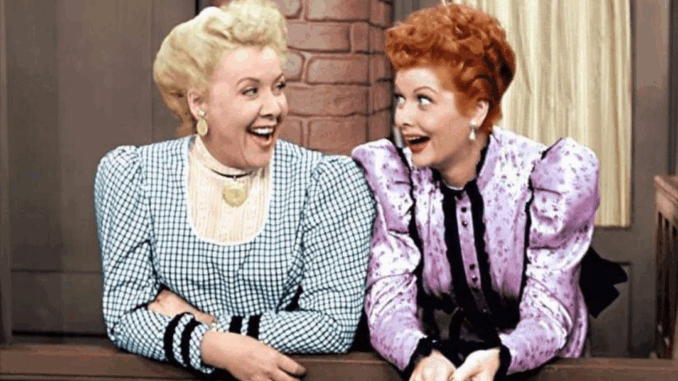
In today’s fast-paced world of streaming and viral content, it’s astonishing that a black-and-white sitcom from the early 1950s still manages to make people laugh out loud. And yet, I Love Lucy does exactly that — more than seven decades after its debut.
🧠 Comedy That Never Ages
Whether it’s slapstick antics, misunderstandings, or Lucy’s unforgettable facial expressions, I Love Lucy proves that physical comedy and relatable situations never go out of style. What made people laugh in 1953 still works today — because the emotions are honest, the performances are sincere, and the humor is universal.
👩❤️👨 A Real Couple with Real Chemistry
The dynamic between Lucy and Ricky Ricardo — played by real-life couple Lucille Ball and Desi Arnaz — brought a natural chemistry to the screen that made the show feel authentic and personal. Their playful arguments, heartfelt moments, and cultural contrasts created a layered portrait of marriage that still resonates today.
Behind the scenes, Desi Arnaz was also an innovator, pioneering technical aspects of sitcom production that still influence the industry.
🌍 Breaking Barriers, Quietly and Brilliantly
Though I Love Lucy aired during a more conservative era, it subtly challenged societal norms:
-
A Latina man married to a white woman on mainstream TV
-
A woman wanting more than just a domestic role
-
A real married couple sleeping in separate beds — until Lucy became pregnant, making history as the first show to mention pregnancy on-air
These moments helped normalize diversity and women’s ambition, long before such topics were common in entertainment.
🎉 From Classic to Cultural Treasure
Whether it’s being replayed on cable, studied in film schools, or trending on social media, I Love Lucy isn’t just an old show — it’s a living part of pop culture. It remains one of the most syndicated, streamed, and analyzed sitcoms of all time.
True quality never fades — and great comedy is always in style.
